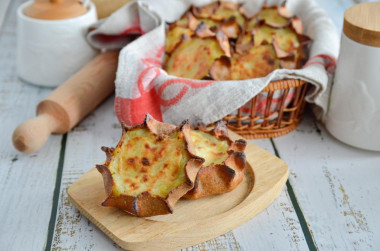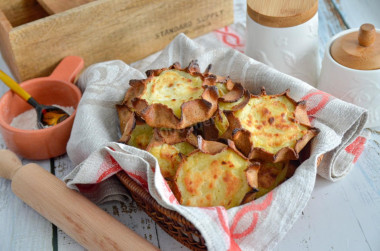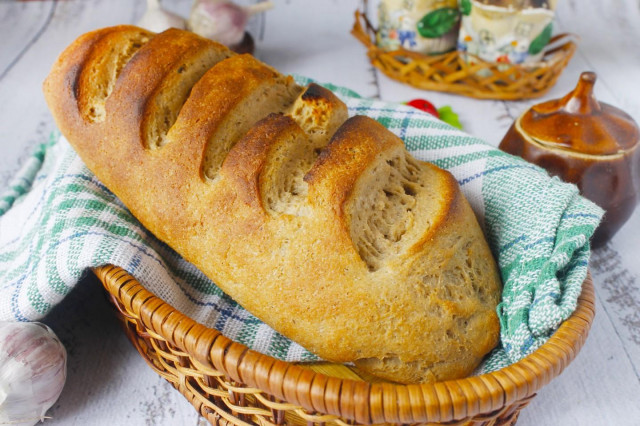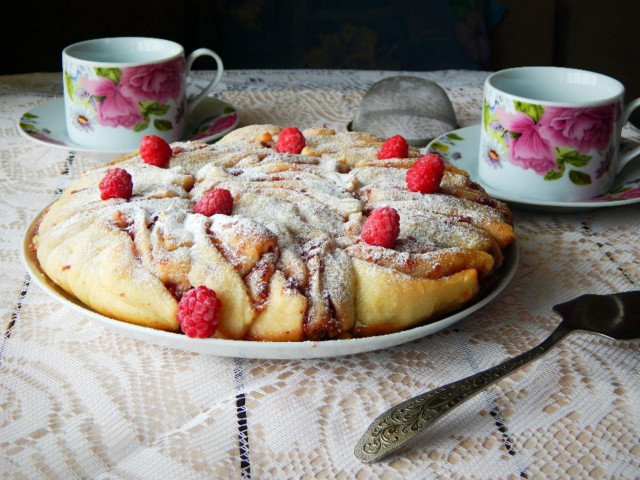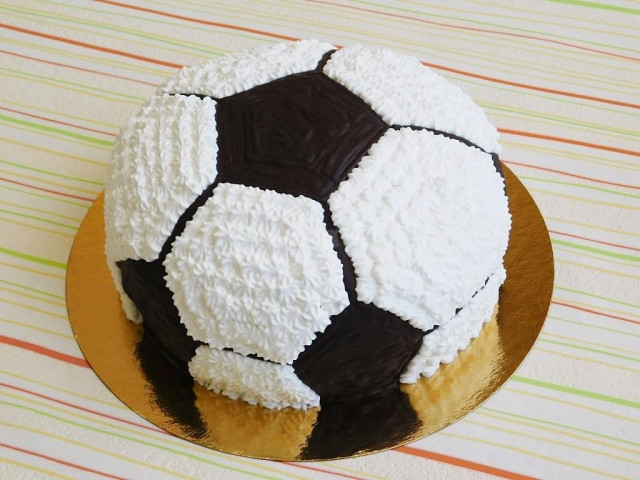Composition / ingredients
Step-by-step cooking
Step 1:
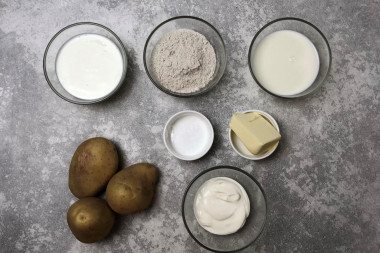
How to make wickets? Prepare the products for making wickets. Kefir may need a little more, you will look at the state of the test. Instead of kefir, you can take yogurt, yogurt without additives, sour cream. Dilute sour cream with milk to a liquid state.
Step 2:
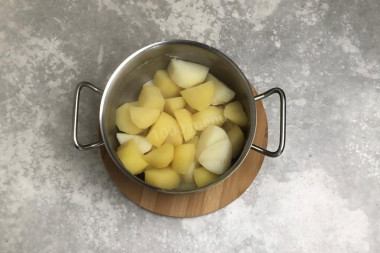
Pre-wash and peel the potatoes. Cut it into large pieces, fill it with cold water. Take good quality water, either bottled or filtered. The taste of mashed potatoes largely depends on its taste. Cook the potatoes, it will take about 20 minutes. Five minutes before cooking, add salt. Drain the water.
Step 3:
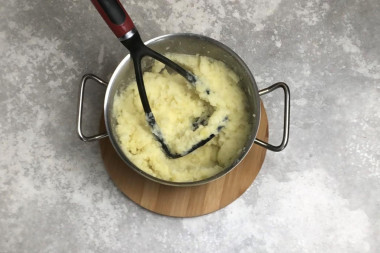
Add butter to the hot potatoes, mash slightly. Pour in the hot milk. From cold milk, the puree may turn gray. It is better to boil it beforehand. Pour the milk in parts, kneading the potatoes at the same time. The puree should not become thick, but so that it can be easily smeared. Then cool the puree completely.
Step 4:
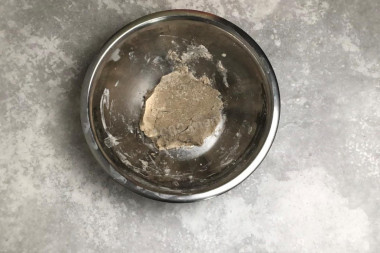
When the puree has completely cooled down, take care of the dough. Rye flour, unlike wheat flour, has practically no gluten, the dough from it does not need to lie for a long time. On the contrary, the dough from rye flour dries quickly. Therefore, it should be done immediately before cooking. Pour the flour into a bowl, add salt, and mix. Pour in the kefir, knead the dough. It is easy to do it right away with your hand, the dough will gather into a lump pretty quickly, it does not need to be kneaded for a long time.
Step 5:

Roll the sausage out of the dough, cut it into pieces the size of a walnut. Put the pieces in a bowl, cover it with a napkin so that the dough does not dry out.
Step 6:
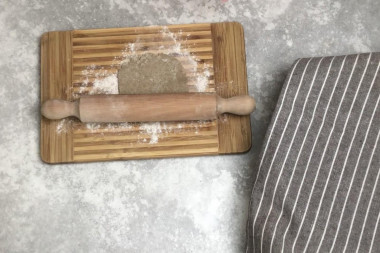
Pour a little rye flour on the board. Take one piece of dough, mash it with your hands into a flat cake. Roll it out with a rolling pin into a circle with a diameter of about 10-12 cm. The dough rolls out very easily, does not tear, while it turns out very thin.
Step 7:
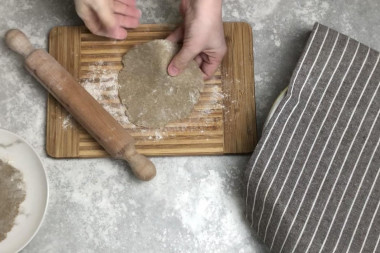
Put the round blank on a plate. Roll out all the dough pieces in the same way. Cover the plate with mugs with a napkin so that they do not dry out.
Step 8:
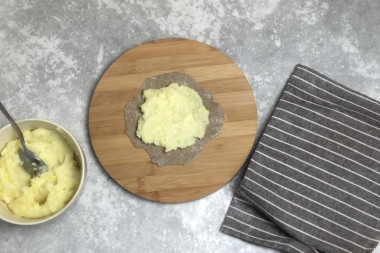
Form the pies. Take a piece of dough, put about two tablespoons of mashed potatoes on it. Spread it evenly over the entire surface, leaving about 1 cm of dough around the edges.
Step 9:
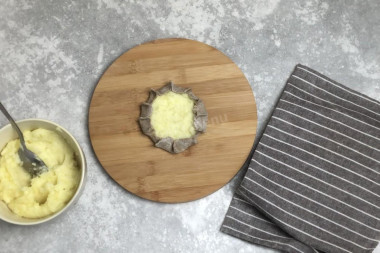
Pinch the dough with corners around the perimeter, leaving the filling inside. Form all the pies in this way.
Step 10:
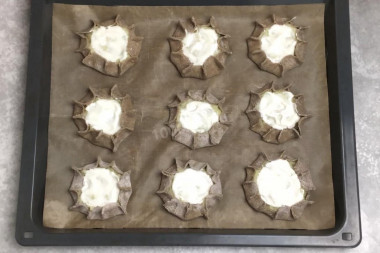
Put baking paper on a baking sheet. Lay out the wickets on it. I got 9 pieces. Put two teaspoons of sour cream in each pie. Spread it on the potatoes. Preheat the oven to a temperature of 240 ° C, top-bottom mode.
Step 11:

Bake the wickets for about 20 minutes. They should turn red on top.
Step 12:
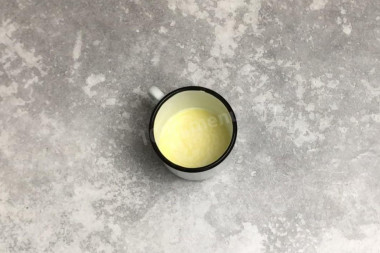
While the wickets are baking, melt a piece of butter.
Step 13:
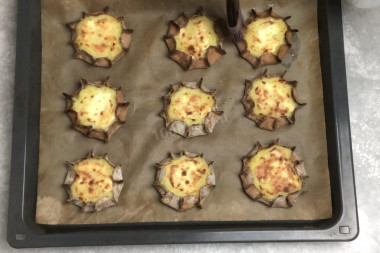
With a cooking brush, brush the dough at the hot gates with melted butter.
Wickets are very tasty in hot and warm form! When cold, they become a little stiff. They are traditionally eaten with milk, but they will also be good as an addition to the first course.
Be prepared for the fact that flour may need more or less than indicated in the recipe. Focus not on the amount of flour, but on the desired consistency of the dough. Read a lot of useful information about flour and its properties in this article!
Keep in mind that everyone's ovens are different. The temperature and cooking time may differ from those specified in the recipe. To make any baked dish successful, use useful information in this article !
Caloric content of the products possible in the composition of the dish
- Ripe potatoes - 80 kcal/100g
- Baked potatoes - 70 kcal/100g
- Mashed potatoes - 380 kcal/100g
- Boiled potatoes - 82 kcal/100g
- Potatoes in uniform - 74 kcal/100g
- Fried potatoes - 192 kcal/100g
- Whole cow's milk - 68 kcal/100g
- Milk 3.5% fat content - 64 kcal/100g
- Milk 3.2% fat content - 60 kcal/100g
- Milk 1.5% fat content - 47 kcal/100g
- Concentrated milk 7.5% fat content - 140 kcal/100g
- Milk 2.5% fat content - 54 kcal/100g
- Sour cream with 30% fat content - 340 kcal/100g
- Sour cream of 25 % fat content - 284 kcal/100g
- Sour cream with 20 % fat content - 210 kcal/100g
- Sour cream of 10 % fat content - 115 kcal/100g
- Sour cream - 210 kcal/100g
- Kefir fat - 62 kcal/100g
- Kefir of 1% fat content - 38 kcal/100g
- Low-fat kefir - 30 kcal/100g
- Kefir "doctor beefy" 1,8% fat content - 45 kcal/100g
- Kefir 2.5% fat content - 53 kcal/100g
- Butter 82% - 734 kcal/100g
- Amateur unsalted butter - 709 kcal/100g
- Unsalted peasant butter - 661 kcal/100g
- Peasant salted butter - 652 kcal/100g
- Melted butter - 869 kcal/100g
- Salt - 0 kcal/100g
- Rye flour - 305 kcal/100g


